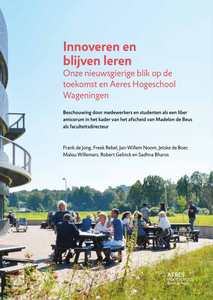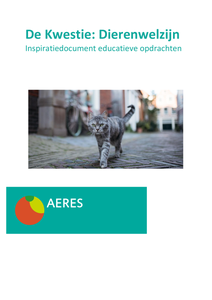Although stressors are frequently linked to several negative health outcomes, experiencing stressors may be necessary for enhancing performance. At present, the literature is lacking a unified, comprehensive framework that accounts for both positive and negative outcomes following stressors. Therefore, we introduce the framework of hormesis, which has been applied in biological research for decades. According to hormesis, small-to-medium doses of a stressor can stimulate an organism's response, while large doses cause detrimental effects. In this article, we argue that these dose-response dynamics can be found in various domains of performance psychology (i.e., eustress and distress, psychological momentum, emotions, motivation, confidence, cognitive performance, training, skill acquisition, adversity, and trauma). Furthermore, hormesis also accounts for the inter- and intra-individual variability commonly found in responses to stressors. Finally, from an applied perspective, leveraging hormesis may stimulate new psychological interventions that mimic the well-known effects of (toxic) vaccinations at the level of behavior.
DOCUMENT

Samenvatting: In het kader van een afstudeerproject zijn data van 33 kinderen verzameld die een X-abdomen onderzoek ondergingen in het Wilhelmina Kinderziekenhuis. Uit deze data zijn curves afgeleid van Dosis Oppervlakte Product (DOP) ten opzichte van het lichaamsgewicht om te dienen als Diagnostisch ReferentieNiveau (DRN). De spreiding in de data leidt echter tot onzekerheid over de beste DRN-curve. Die curve is bovendien slechts gebaseerd op de data van één ziekenhuis en is daarmee hooguit bruikbaar als lokaal DRN. Door deze studie te herhalen in andere ziekenhuizen en meer data te verzamelen zou een nationale DRN-curve afgeleid kunnen worden. Zo’n curve zou de toetsing van doses aan DRN’s voor kinderen vergemakkelijken.
DOCUMENT

Dit artikel is gewijd aan de kernbegrippen van dit themanummer: innoveren, ondernemen, globalisering en de relaties daartussen. Uiteenlopende invalshoeken en disciplines zijn nodig om die verbanden te duiden. Gebruikmakend van kennis over innovaties en innovatieprocessen laten zich verschillende typen innovaties schetsen. Door innoveren in historisch perspectief te plaatsen laat zich de relatie leggen naar globalisering. Economie en economische wetenschap maken het mogelijk om de relatie tussen innoveren en ondernemen te expliciteren. Sociale psychologie tenslotte helpt bij het beantwoorden van een hele praktische vraag: innoveren – hoe doe je dat?1
DOCUMENT

Achtergrond Het is bekend dat gestructureerde instrumenten voor taxatie van het kortetermijnrisico bijdragen aan het voorspellen van fysiek agressief gedrag bij patiënten in de acute psychiatrie. Doel Onderzoeken of de Brøset Violence Checklist (BVC), een instrument voor de inschatting van fysieke agressie op korte termijn, kan bijdragen aan het voorspellen van fysieke agressie-incidenten binnen de forensische psychiatrie en onderzoeken hoe het gebruik van de BVC wordt ervaren. Methode Tweemaal per 24 uur op min of meer vaste momenten werd voor alle patiënten die in 2019 verbleven op een crisisafdeling binnen een forensisch psychiatrisch centrum een BVC-score geregistreerd. De totaalscores van de BVC werden vervolgens gerelateerd aan fysieke agressie-incidenten. Daarnaast werden focusgroepen en interviews gehouden met sociotherapeuten om de ervaringen met het gebruik van de BVC te onderzoeken. Resultaten Uit de analyse kwam een significante voorspellende waarde van de BVC-totaalscore naar voren (AUC = 0,69; p < 0,01). Bovendien ervoeren de sociotherapeuten de BVC als gebruikersvriendelijk en weinig tijdsintensief. Conclusie De BVC heeft toegevoegde waarde voor de forensische psychiatrie. Dit geldt met name voor patiënten bij wie de primaire diagnose géén persoonlijkheidsstoornis betreft.
DOCUMENT

Journal of Physics: Conference Series Paper • The following article is Open access Exploring the relationship between light and subjective alertness using personal lighting conditions J. van Duijnhoven1, M.P.J. Aarts1, E.R. van den Heuvel2 and H.S.M. Kort3,4 Published under licence by IOP Publishing Ltd Journal of Physics: Conference Series, Volume 2042, CISBAT 2021 Carbon-neutral cities - energy efficiency and renewables in the digital era 8-10 September 2021, EPFL Lausanne, Switzerland Citation J. van Duijnhoven et al 2021 J. Phys.: Conf. Ser. 2042 012119 Download Article PDF References Download PDF 29 Total downloads Turn on MathJax Share this article Share this content via email Share on Facebook (opens new window) Share on Twitter (opens new window) Share on Mendeley (opens new window) Hide article information Author e-mails j.v.duijnhoven1@tue.nl Author affiliations 1 Building Lighting Group, Department of the Built Environment, Eindhoven University of Technology, Eindhoven, The Netherlands 2 Stochastics, Department of Mathematics and Computer Science, Eindhoven University of Technology, Eindhoven, The Netherlands 3 Research Centre Healthy and Sustainable Living, University of Applied Sciences Utrecht, Utrecht, The Netherlands 4 Building Healthy Environments for Future Users Group, Department of the Built Environment, Eindhoven University of Technology, Eindhoven, The Netherlands DOI https://doi.org/10.1088/1742-6596/2042/1/012119 Buy this article in print Journal RSS Sign up for new issue notifications Create citation alert Abstract The discovery of the ipRGCs was thought to fully explain the mechanism behind the relationship between light and effects beyond vision such as alertness. However, this relationship turned out to be more complicated. The current paper describes, by using personal lighting conditions in a field study, further exploration of the relationship between light and subjective alertness during daytime. Findings show that this relationship is highly dependent on the individual. Although nearly all dose-response curves between personal lighting conditions and subjective alertness determined in this study turned out to be not significant, the results may be of high importance in the exploration of the exact relationship.
MULTIFILE

Creditmanagement lijkt een onderwerp dat we inmiddels wel kennen. Toch is het vakgebied nog volop in ontwikkeling, zowel vanuit de praktijk als vanuit de theorie. Waar nu met name de focus ligt op tijdgedreven creditmanagement (gebaseerd op days sales outstanding), betogen wij in dit artikel dat creditmanagement veel beter gebaseerd kan worden op de risico’s en kosten die aan leverancierskrediet zijn verbonden.
DOCUMENT

Op basis van 19 semigestructureerde interviews met medewerkers verdeeld over de domeinen is opgetekend wat zij onder studentengagement verstaan, wat zij ondernemen en welke (on)mogelijkheden zij zien. Deze factsheet laat zien dat de termen die vielen o.a. betrokkenheid, binden en intrinsieke motivatie waren. Ook staan de vier soorten engagement die in de literatuur te onderscheiden zijn, vermeld. Daarnaast een overzicht van activiteiten om betrokkenheid te beïnvloeden, tips om engagement te vergroten en welke uitdagingen daarbij komen kijken.
MULTIFILE

Dit boek is een liber amicorum, een vriendenboek, in het kader van het afscheid van Madelon de Beus van Aeres Hogeschool Wageningen. Zij is bijna twintig jaar directeur geweest van deze faculteit en haar rechtsvoorgangers: Stoas Hogeschool, Stoas Hogeschool Wageningen, faculteitsdirecteur Vilentum Hogeschool Wageningen, en ten slotte Aeres Hogeschool Wageningen de Educatieve faculteit. In lijn met haar gedachten en intenties staat in dit vriendenboek de Educatieve faculteit in Wageningen op de voorgrond. Niet door terug te kijken maar, geheel in de geest van Madelon, vooruit te kijken. Docenten, studenten, administratieve en facilitaire ondersteuners, lectoren, docentonderzoekers, teamleiders: 39 ‘auteurs’ zijn in kleine groepjes in gesprek gegaan over wat zich in de buitenwereld en binnen Aeres Hogeschool Wageningen voordoet. Vanuit ieders perspectief, soms ook vanuit een historisch uitstapje, zijn in een vorm van collectief leren ideeën gevormd. Ideeën wat deze ontwikkelingen betekenen voor allerlei facetten van de Aeres Hogeschool Wageningen. Zoals het curriculum, het gebouw, de opleidingsprofielen, de didactiek, de ondernemende houding, bij- en nascholing, de onderzoekscultuur, de onderzoekende innovator en professioneel leiderschap. Veel van de ‘auteursgroepjes’ vonden het zo inspirerend dat ze zich hebben voorgenomen de gesprekken voort te zetten. Voor u als lezer geeft het boek op inspirerende wijze een inkijk in hoe de betrokkenen binnen de faculteit tegen toekomstige uitdagingen aankijken vanuit hun dagelijkse zorg om blijvend goed onderwijs, onderzoek en dienstverlening te bewerkstelligen. De auteurs wensen u veel leesplezier.
DOCUMENT

Toeleveranciers van de auto-industrie worden steeds vaker geconfronteerd met vragen op het gebied van dunne plaat van Hoge Sterkte Staal (HSS). Daarnaast wordt HSS in veel andere toepassingen gebruikt, waarbij gewichtsbesparing van belang is. Deze publicatie, die binnen het project 'nieuwe materialen' is ontwikkeld, geeft antwoord op de meest voorkomende praktische vragen die zich bij de verwerking van dunne plaat van HSS voor kunnen doen. De vervormingsstaalsoorten met verhoogde sterkte, die in de strikte zin niet onder het begrip HSS vallen, zijn vanwege de brede toepassing in de dunne plaatverwerking in dit Tech-Info-blad inbegrepen. In het kader van dit project zijn tevens uitgegeven: TI.04.19 'Roestvast staal in dunne plaat en buis', TI.04.20 'Scheidingstechnieken voor dunne plaat en buis', TI.04.21 'Aluminium in dunne plaat en buis' en TI.04.22 'Ontwerpen van dunne plaat producten en de Eindige Elementen Methode. Deze publicaties zijn op http://www.dunneplaat-online.nl/smartsite9719.htm?goto=13697 vrij te downloaden.
DOCUMENT

Dierenwelzijn is een actueel en veelzijdig thema dat steeds meer aandacht krijgt in de maatschappij en het onderwijs. Dit inspiratiedocument hoort bij de gelijknamige documentaire en helpt docenten om het onderwerp op een educatieve, prikkelende en interactieve manier in de klas te behandelen. Met concrete opdrachten, discussievragen en verdiepingsopdrachten worden studenten uitgedaagd kritisch na te denken over ethische dilemma’s. Zo ontstaat inzicht in de impact van menselijk handelen en maatschappelijke keuzes rondom dierenwelzijn. Dit onderzoek is geproduceerd door het lectoraat Human-Animal Interactions
DOCUMENT
